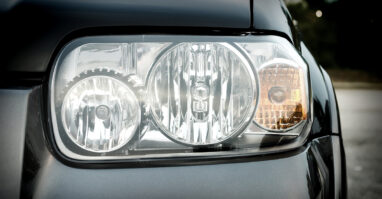Managing Factory Incentives
With supply chains still shaking off the effects of the pandemic and demand starting to soften, original equipment manufacturers (OEMs) are looking for new ways to cut costs. Clients and others in the industry have reported an increase in frequency of incentive audits. They have also started to transition back to on-site audits vs. desk or mail-in audits. OEMs have been able to “do more with less” as they utilize more computer-assisted techniques and targeted auditing to expedite their reviews.
To better understand these incentive audits and what dealers can do to prevent or mitigate the negative impacts of an audit, we spoke with Sherralyn Peterson, a General Motors incentive specialist who helps dealers improve their incentive management processes, train their staff and prepare for incentive audits.
What are manufacturers focused on?
Every OEM has incentive programs—none of which are the same—and OEMs have tools that enable them to quickly validate a claim. Peterson pointed out that one of the changes resulting from the chip crisis was that OEMs now watch every vehicle very closely, and they know exactly where it is at all times. It’s important to make sure you know the requirements for delivery reporting and that you do it accurately. For example, can you sell a vehicle before it hits your lot? Is it a retail sale, fleet or commercial sale? It’s easy for OEMs to use a car’s vehicle identification number (VIN) look-up to determine incentives or if a customer was the original purchaser using incentives toward loyalty or similar programs.
What are some best practices for incentives compliance?
With seemingly minor infractions enough to disallow a claimed incentive, sales managers need to know their programs inside and out. Peterson indicated there needs to be an understanding that you can’t just plug someone into a role where they’re responsible for managing and reviewing incentives. Specific and intentional training is imperative—even switching between OEMs can be difficult—and prevention is more effective than resolving issues during an audit.
Managers should take compliance seriously and inform sales staff that errors or incomplete information won’t be overlooked. Do what you can to get all the necessary signatures and information before the customer leaves. Linking accountability to compensation is a great way to get results.
How do you get off/stay off the radar?
OEMs are becoming more targeted in their approach to incentive audits. They’re looking for low-hanging fruit, and dealers shouldn’t really be surprised if they get selected for an audit. OEMs obtain information from various sources—registrations, exporters, banks, etc.—and use it to analyze and compare you with other dealers. Make sure your team understands program requirements and follows through with documentation.
What if you’re selected for an audit?
In the event of an audit, make sure you’re not surprised by what is in your deal jackets. Review any high-risk deals, and have your paperwork in order. Be aware of what not to show the auditors—you should only provide the minimum required information; unnecessary or irrelevant information should not be handed over. Control and be intentional about who is in contact with the auditor and how they communicate.
Despite the complexity of incentive programs, they’re an important part of a dealer’s business, especially as interest rates reach 20-year highs and new-vehicle prices continue climbing. Properly managing incentive programs can help ensure these are a tool rather than a compliance nightmare. Training, execution and oversight are important to any process, and that’s no different for incentives. Being proactive can help keep you out of OEM crosshairs and, in the event you are selected for an audit, help ensure that you are prepared.
Consult your AutoCPAGroup member for assistance in navigating the complexities of incentives.
By Matthew Marcoullier, CPA Albin, Randall & Bennett, CPAs
Navigating The New 45w Credit: A Breakdown Of Incentives For Commercial Clean Vehicles
The Inflation Reduction Act of 2022 significantly changed electric vehicle (EV) credits, aiming to boost clean vehicle adoption. Among them, the 45W Credit for Qualified Commercial Clean Vehicles garnered attention and raised numerous questions.
The commercial credit offers up to $40,000 for qualified vehicles weighing >14,000 pounds and $7,500 for those under that limit. You can determine the credit amount by calculating the following:
- The lesser of 15% of the basis of the vehicle for hybrids, 30% for fully EVs, or the incremental cost of these vehicles compared to a solely powered gas or diesel vehicle
To qualify, the vehicle must be manufactured by a qualified maker and be
- Used in a trade/business or income production (not for resale)
- Considered a motor vehicle for Clean Air Act’s Title II purposes, primarily for public road use, or “mobile machinery” for federal excise tax on heavy trucks
- Mainly powered by an electric motor drawing electricity from a battery with a capacity of at least 15-kilowatt hours (or 7-kilowatt hours for <14,000-pound vehicles), rechargeable from an external source, or propelled by power from certain fuel cells or meet specific EPA emission standards.
The 45w Credit Frequently Asked Questions
Q: Can loaner fleet EVs qualify for the credit?
A: If they meet all criteria, including being manufactured by a qualified maker, meeting road use standards and electric motor requirements, they are eligible.
Q: How is the credit calculated?
A: It equals the lesser of the vehicles basis multiplied by 15% or 30% or the incremental cost. According to the 2023 Department of Energy (DOE) analysis, the incremental cost for most street vehicles (excluding compact cars) is $7,500. DOE defines compacts as having an interior volume of <110 cubic feet; for compacts, use the DOE’s analysis to determine the incremental cost.
Q: Is there a limit on the credits we can claim?
A: There is no limit on the number of credits a business can claim.
Q: Can we claim the Used Clean Vehicle Credit if a loaner vehicle is later sold to an affiliate dealer to be used as a service shuttle?
A: No, the purchaser cannot be the original user. For affiliate pass-through entities, the new credit—tracked by VIN—would flow through to the same individual.
Q: Can a retail customer who buys our loaner claim a clean vehicle credit?
A: It depends. Remember, it is the original use of the vehicle that allows it to qualify. If sold, the used clean vehicle credit requires a selling price of $25,000 or less and a model year at least 2 years older than the current year.
Bottom line
The 45W Credit has ignited interest in EVs. However, uncertainties persist due to pending regulations.
Monitoring updates and consulting qualified tax professionals remain crucial to ensure compliance, and your AutoCPAGroup member is ready to assist should you take advantage of this new credit.
By Jeremy Medernach, CPA Boyer & Ritter, LLC
Legislation Against Automakers’ Direct Sales Adds Ambiguity To “Electric Future”
Over the past few years, many states have granted a favorable exemption to EV-exclusive automakers, promulgating the nationwide “electrification” movement. This exemption is similar among jurisdictions; non–EV-exclusive automakers are banned from utilizing a direct-sales model to market their products, and EV-exclusive automakers can continue using the aforementioned sales model.
Florida has become the newest state to enact this legislation, with the ratification of House Bill 637 (HB 637), which bans most direct-sale vehicle transactions in Florida. Concerns such as appropriate inventory ordering, EV profitability and dealer/manufacturer relationships are worth consideration as jurisdictions have rapidly adopted legislation favoring franchise dealerships.
Exempt automakers include Tesla and ostensibly Lucid, Polestar and Rivian, all of which strictly use either a direct-sales model or give consumers the option to configure and purchase their desired vehicles using an online platform. With Tesla selling 3 of the top 5 bestselling EVs in 2022, it can be inferred that EV-exclusive automakers will have a greater contribution to the forecasted increase in 2023 EV sales than other automakers, especially because their EV production costs remain below those of legacy automakers.
This will likely lead to greater profitability for EV-exclusive automakers compared to legacy automakers, some of whom have aversions to ordering EV inventory. The Sierra Club published a report in 2023 stating that 45% of the 66% of dealerships that did not have an EV available for sale were not interested in offering one, despite automaker supply.
Clueless are the thousands of head-scratching consumers who wonder why franchise dealerships have not fully capitulated to America’s electric future. According to an article by Reuters, EVs have sat on dealership lots for upwards of 130 days, demonstrating the mitigated supply-chain bottleneck, which has given the opportunity for legacy automakers to produce greater quantities of EVs. Combine that with buyers’ hesitation as they glance at the continuously high sticker prices of EVs (net of tax credit and price reductions), and the days-in-inventory statistic becomes more understandable.
Franchise dealerships across the nation can interpret legislation similar to HB 637 as an opportunity to grow and adapt. This legislation provides more than just the advantage of directing business to franchise dealerships; it provides insight on being accountable for future marketable inventory orders. A duty of franchise dealerships is to preserve the image of the automaker they are loyal to. However, if essentially all non-Tesla EVs are required to be sold through franchise dealerships who struggle to realize profit and move inventory, the requisite factor in maintaining stable relationships among automakers, franchise dealers, and consumers is manipulating the constraints and allowances of state regulations similar to HB 637 so that all parties can walk away satisfied, a goal that will not come easily.
During a tumultuous period in vehicle retail, cooperating with automakers in adherence to regulations is often easier said than done. Florida now joins many other states who have banned automakers’ direct-sales model yet made exceptions for EV-exclusive automakers.
Should you need assistance adhering to these regulations, please contact your local AutoCPAGroup member.
By George Alexander Spoor Bunch Franz






